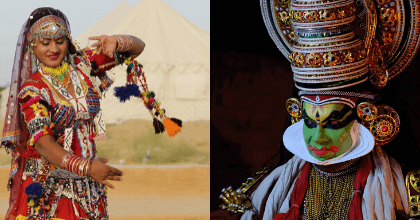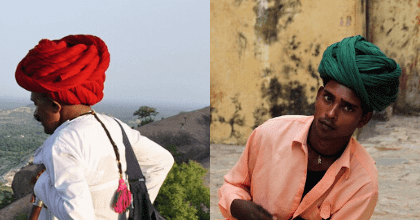Stepwells of India
India the Continent masquerading as a country: Part 4

Stepwells of India are the architectural world’s equivalent of an endangered species.
Jasmine Trails Travel Guides
Stepwells! Well you have probably never heard of them. No need to worry, this Jasmine Trails Travel Guide focuses exclusively on the intricacies and glories of the Stepwells of India. Stepwells of India are the architectural world’s equivalent of an endangered species. Victoria Lautman, the author of “The Vanishing Stepwells of India” notes, “It’s hard to imagine an entire category of architecture slipping off history’s grid, and yet that seems to be the case with India’s incomparable stepwells”.
“India’s incomparable stepwells” is an apt description of this architectural marvel and is one of India’s most unusual contributions to architecture. Stepwells are designed primarily to fulfill the basic utilitarian need of storing water and to cope with seasonal fluctuations of the availability of water.
“India’s incomparable stepwells” is an apt description of this architectural marvel and is one of India’s most unusual contributions to architecture.
In a nutshell, a stepwell is a well that has steps leading down to the water. Stepwells of India are usually found in the dry parts of India namely Rajasthan and Gujarat. In these arid states, the water table is very low and in a lot of cases where stepwells are found, the water level is below an inconvenient 300 feet!
Stepwells are deep underground trenches to store water and provide dependable accessibility to water throughout the year. These trenches were lined with blocks of stone and huge stairways that lead down to the water level as dictated by the season. In times of drought, one would have to climb down to the very bottom to get to the water, but in times of heavy rain, the water level rose to a more convenient height. The simplicity of this concept that lead to the engineering marvel of the stepwells of India, is difficult to visualize till you actually visit a stepwell.
“The simplicity of this concept that lead to the engineering marvel of the stepwells of India, is difficult to visualize till you actually visit a stepwell.”
No two stepwells are identical and the architectural particulars of each are unique and are built around the depth of a constructed well. Stepwells can be categorized by materials used in construction (brick, rubble or masonry), shape (rectangular, circular and L-shaped) and their layout. The only commonality between stepwells is their strikingly beautiful architecture, complex feat of engineering, and their intricate art.
Stepwells were an ingenious system for water preservation that continued for over millennium. Just a word of caution, stepwells are not to mixed up with stepped ponds. Stepped ponds are very public and very visible places and were almost always built to accompany a temple. Whereas stepwells are hardly visible from the surface, usually secluded sometimes even private properties. Stepwells are linear in design, very deep and with at times reflected illumination. Stepped ponds are square or rectangular in shape with direct illumination and are not very deep.
Tourists both domestic and international throng to India’s forts and palaces, tombs and temples but very few know about these centuries-old stepwells that can be found hiding-in-plain-sight. Jasmine Trails loves to show our guests these almost extinct architectural wonders called Stepwells wherever possible.
“Tourists both domestic and international throng to India’s forts and palaces, tombs and temples but very few know about these centuries-old stepwells that can be found hiding-in-plain-sight.”
Stepwells of India have distinct names, depending on the region you are visiting. In the Hindi-speaking regions, they are called baudi or baoli. In Rajasthani stepwells are known as bawri, baoli, bavadi, and bavdi. In Gujarati they are known as vav or vaav. In Karnataka they are called kalyani or pushkarani and barav Marathi.
It is not entirely clear as to when stepwells began to be constructed. There is speculation that the earliest known stepwells were constructed during the 6th century AD, while some sources peg the dates between the 2nd and 4th centuries AD. What we do know is that the last stepwell of the Golden Era of Indian Stepwells, was built in 1903.
The architecture and concept of Stepwells is of Hindu origin. The Muslim rulers of the Mughal empire soon grasped the value of stepwells and they allowed the construction of stepwells to continue and even built a few of their own in the course of their conquests. For example, Babur the first Mughal Emperor of India, was fascinated by stepwells and built one inside the Agra Fort. The British who subsequently occupied India considered stepwells to be unsanitary and stepwells fell into a state of disuse and disrepair.
Jasmine Trails loves to show our guests these almost extinct architectural wonders called Stepwells wherever possible.
Here are a Seven of our favorite Stepwells in North India
The History and the Mystery of the Stepwells of India.
1. Chand Baori in Abhaneri, Rajasthan
Chand Baori is in the of village of Abhaneri, near Jaipur in Rajasthan. The stepwell is Named after Raja Chanda, a Rajput ruler of the eighth century A.D. The oldest parts of this well can be dated back to the 8th Century, the upper stories were added later in the 18th century
Chand Baori is more than 13 stories deep and extends 100 feet into the ground, with 3500 steps leading down to the water level. It is the deepest and oldest stepwell in the world and a stunning example of the architecture of that era.

2. Rajon ki Baoli in New Delhi
Rajon ki Baoli also referred as Rajon ki Bain is a picturesque stepwell and is a part of the Mehrauli Archaeological Park of New Delhi. Rajon ki baoli gets its name from the rajmistries or masons who were meant to use it. The name is misleading because Raja means King! But ‘rajbirs’ or ‘mistris’ means masons.
[bctt tweet=”The name Rajon ki Baoli is misleading because Raja means King! But rajbirs or mistris means masons.” username=”JasmineTrails”]
The stepwell has four levels, each getting narrower as one descends towards the water. Rajon ki baoli has a colonnaded arcade with internal rooms (for providing relief from the heat) running along three sides of the stepwell. A grand structure both in terms of architecture and scale.
It was commissioned and built by Daulat Khan in during the reign of Sikandar Lodi in 1516.
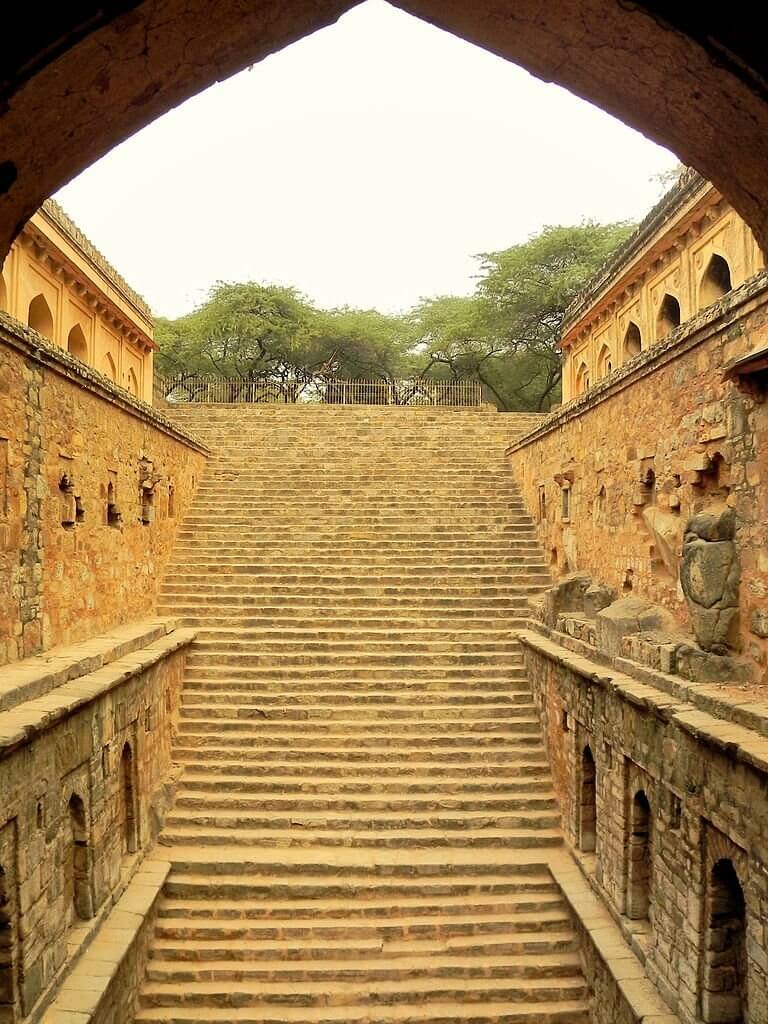
3. Rani Ji Ki Baori and Nagar Sagar Kund in Bundi, Rajasthan
The architecturally impressive Raniji Ki Baori and Nagar Sagar Kund are two stepwells in the centre of Bundi’s market. This picturesque town has over 50 stepwells and these ornately designed baoris was once the prime source of water for Bundi. Not surprisingly Bundi is also knows as the “City of stepwells”. Rani Nathavati is believed to have built 21 of these stepwells.
[bctt tweet=”Not surprisingly Bundi is also knows as the “City of stepwells”. Rani Nathavati is believed to have built 21 of these stepwells.” username=”JasmineTrails”]
Raniji ki Baori or the “Queen’s stepwell” is more than 45 meters deep, built in 1699 by Rani Nathavati Ji. This multistory structure has places of worship on each floor. This stepwell has ornate carvings on its pillars and arches.
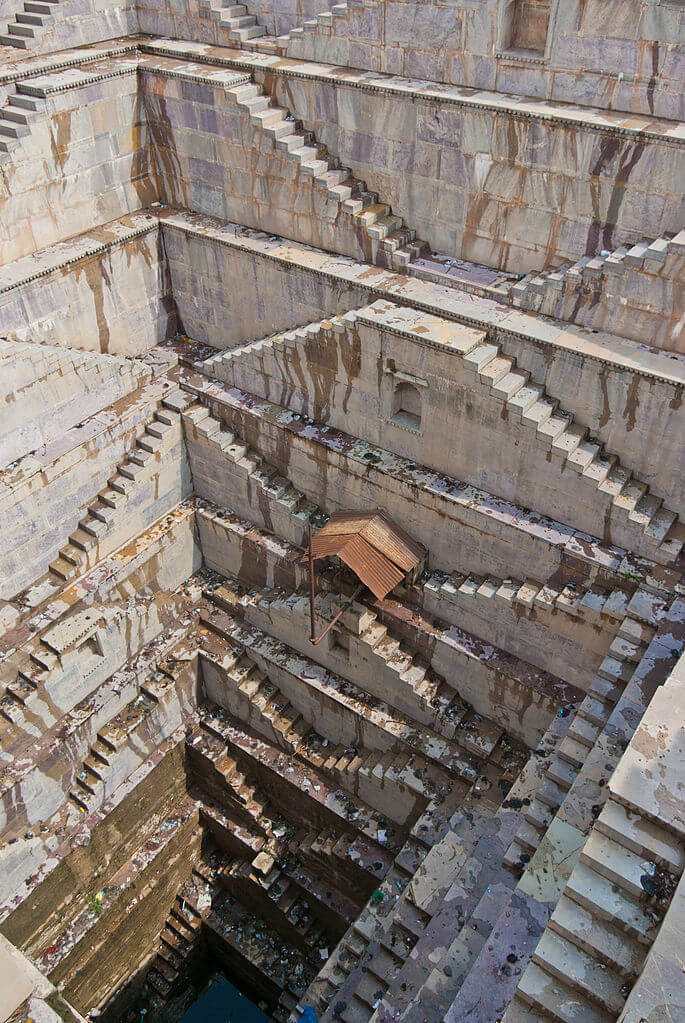
4. Rani ki Vav in Patan, Gujarat
Rani ki vav is a UNESCO’s World Heritage Site and is considered to be the largest and finest example of stepwell architecture in the state of Gujarat. The stepwell is designed as an underground inverted temple and is constructed in the Maru-Gurjana style. This magnificent stepwell has seven stepped terraces, four huge pavilions, seven hundred carved panels, five hundred principal sculptures, a thousand minor sculptures and the exquisite Das Avtaras of Lord Vishnu are found on level three.
[bctt tweet=”The mother of all the Stepwells of India has, four huge pavilions, seven hundred carved panels, five hundred principal sculptures, a thousand minor sculptures and the exquisite Das Avtaras on level 3.” username=”JasmineTrails”]
This is the mother of all the Stepwells of India. This stepwell was commissioned by Rani Udayamati in memory of her husband King Bhimdev I of the Solanki dynasty, who ruled Gujarat and neighbouring areas till his death in 1064. This huge stepwell is 64 metres long, 20 metres wide and 27 metres deep!
You must take a look at CyArk’s 360 degree digital record of Rani ki Vav here: https://www.cyark.org/projects/rani-ki-vav

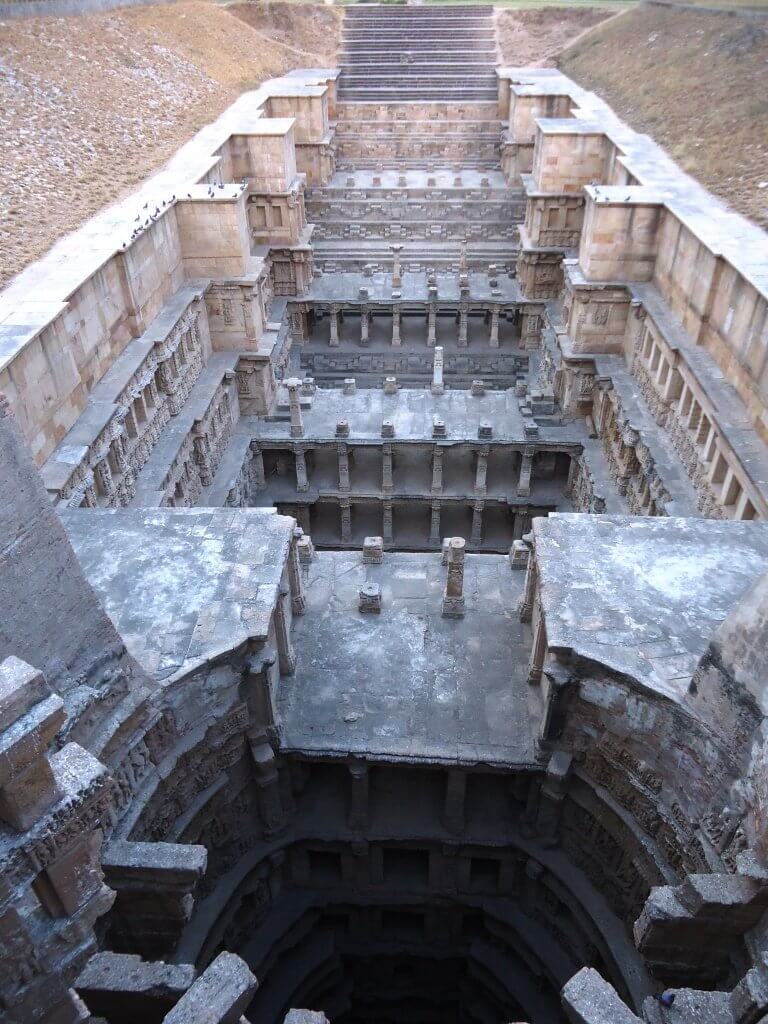
5. Panna Meena Ka Kund, Amer, Rajasthan
The hidden gem of Amer. Panna Meena Ka Kund is also called Panna Mian Kund, is an eight stories deep stepwell and is located in Amer town close to Ambikeshwar Mahadev Temple. Very little is known about the history of this stepwell apart from the fact that this stepwell was built during the reign of Maharaja Jai Singh in the 16th century. It’s fascinating pattern of symmetrical stairs makes it one of our favorites.
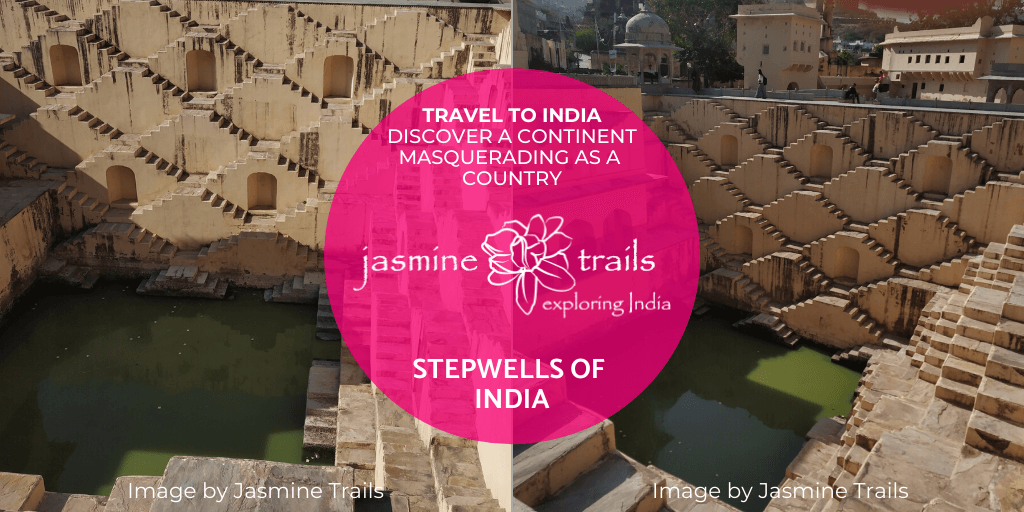
6. Agrasen ki Baoli, New Delhi
Agrasen ki Baoli (also known as Ugrasen ki Baodi) is a 60-meter long and 15-meter wide stepwell in the heart of New Delhi.
Though we are not sure who built this enchanting stepwell, but legend has it that this Baoli was originally built by King Agrasen in and around the time of the Mahabharata approximately 3000 BC! The Aggarwal community who claim lineage King Agrasen rebuilt it in around the 14th century.
This stepwell is considered haunted and no one can stay beyond 6 pm.
[bctt tweet=”This stepwell Agrasen ki Baoli is considered haunted and no one can stay beyond 6 pm.” username=”JasmineTrails”]
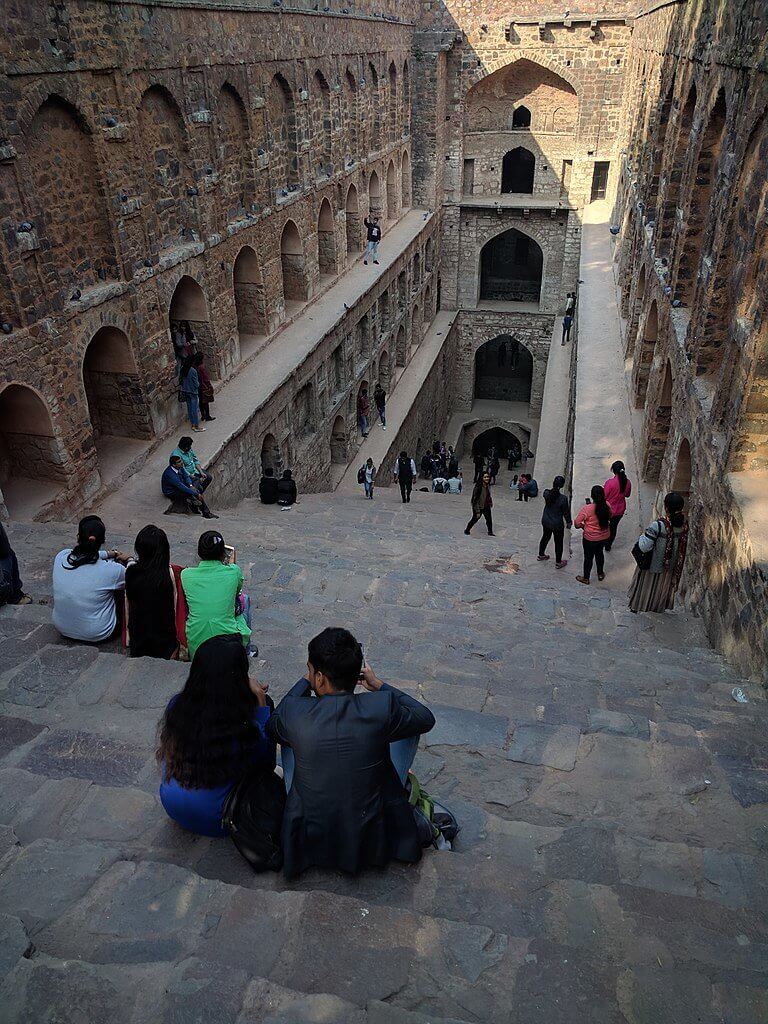
7. Adalaj Stepwell, Ahmedabad, Gujarat
Adalaj stepwell also known as the Rudabai stepwell in Adalaj is approximately 18 kilometers north of Ahmedabad in the state of Gujarat.
Unlike the other Stepwells of India, this stepwell has a well-established history which is captured in Sanskrit inscription on a marble slab found on the first floor of the well. This inscription clearly captures the date of construction, cost and who commissioned the construction.
Construction was started in 1498 by Rana Veer Singh of the Vaghela dynasty, who ruled over a small territory called Dandai Desh. Before he could complete this project, he was killed in battel against his adjoining state, whose Muslim king Mahmud Begada completed the project in Indo-Islamic architectural style, in 1499.
Now legend has it that the conqueror Mahmud Begda, fell in love with the bereaved queen and wanted to marry her. She agreed to his proposal provided he finish this stepwell in honour of her dead husband. Mahmud Begda built a grand lavish and ornate stepwell that is five stories deep, decorated with a blend of Hindu symbolism and Islamic architecture. When the well was complete Mahmud Begda, asked the Queen to inspect his work and honour her commitment to marry him. Queen Rudadevi went around the stepwell, with a prayer on her lips she jumped into the well and killed herself.
Here ends the saga of the most tragic Stepwells of India.
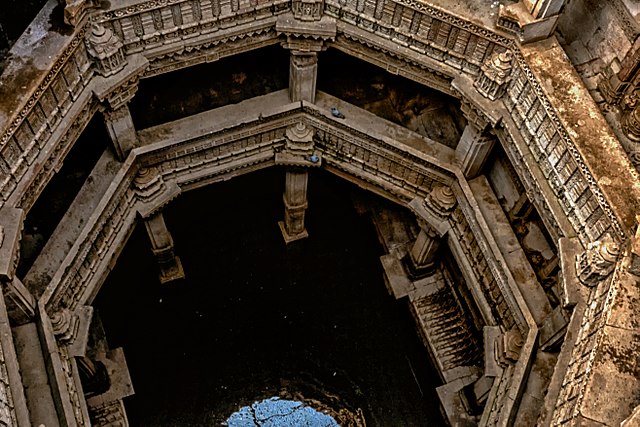
With India water scarcity reaching alarming levels. We hope that stepwells, which are a very practical and elegant means of water management are revived.
If you would like a customized tour of India based around the theme of Stepwells of India do contact us.
Jasmine Trails Travel Guides– taking you deeper into the subject.
Stepwells of India is part of the “Continent Masquerading as a Country” series.



